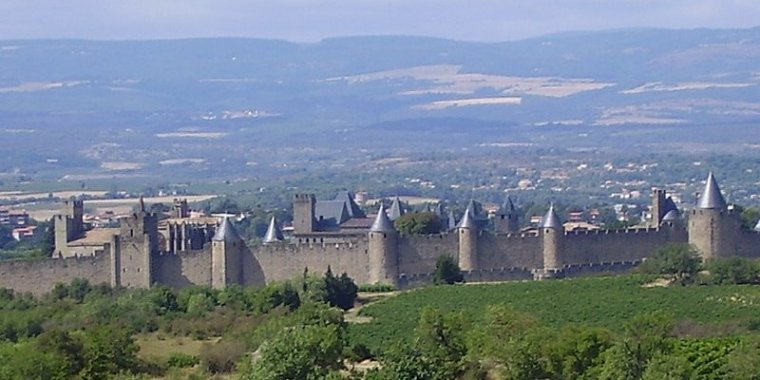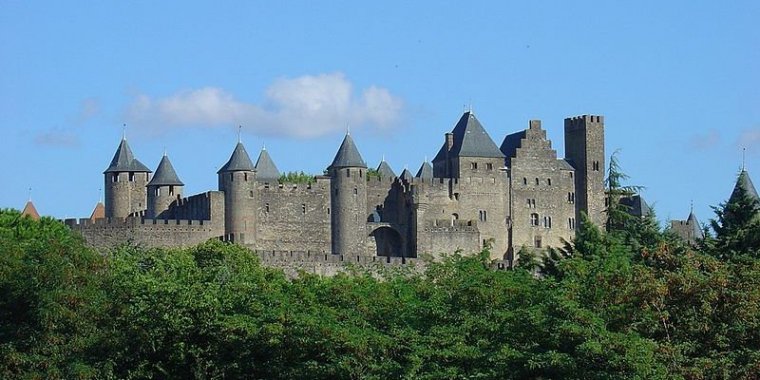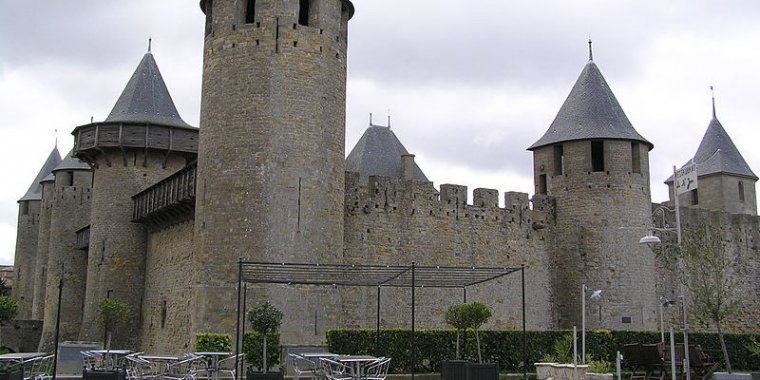| Published in Destinations |
Carcassonne, France
Carcassonne is located in the south of France, about 80 kilometres east of Toulouse. Its strategic location between the Atlantic Ocean and the Mediterranean Sea has been known since the neolithic era.
The town's area is about 65 km2 (25 sq mi), which is significantly larger than the numerous small towns in the department of Aude. The rivers Aude, Fresquel and the Canal du Midi flow through the town.
Carcassonne is divided into two main parts:
• The Cité de Carcassonne, a medieval fortress settlement with a history that exceeds two and a half thousand years. Picturesque fortifications (over 3 km of walls with 52 towers, Robin Hood: Prince of Thieves was partly shot here) were reconstructed by Viollet-le-Duc in the 19th century but, as with most monuments reconstructed in those times, authenticity was not the main objective. It is listed in the UNESCO World Heritage List.
• The town centre, known as the ville basse (literally 'lower city'), where the other sights and hotels are located.
Climate
Carcassonne has a hot-summer mediterranean climate typical of Southern France, with moderately wet and mild winters coupled with summers averaging above 28 °C (82 °F) during daytime with low rainfall.
Get in
By train
Carcassonne railway station is situated on the Bordeaux - Sète and Carcassonne - Rivesaltes SNCF lines.
High speed TGV trains from Lille, Bruxelles, Dijon, Lyon, Marseille and Toulouse call at Carcassone. Slower Corail Téoz between Bordeaux, Marseille, Nice and Paris towards Cerbère and Port-Bou (and overnight Corail Lunéa couchette trains between Paris and Cerbère / Port-Bou) also stop.
An extensive network of frequent, modern and comfortable regional services are provided by SNCF's TER Languedoc-Roussillon, with services to Toulouse, Narbonne, Marseille, Cerbère, Perpignan, Limoux and Quillan.
The train journey from Toulouse is around 1hr to 1hr 15min depending on the train type.
By plane
Carcassonne Airport (CCF) (3 km from the centre of Carcassonne).
Ryanair serves the airport to/from Billund, Bournemouth, Charleroi, Cork, Dublin, Eindhoven, Glasgow (Prestwick), Liverpool, London-Stansted, Nottingham (East Midlands airport) and Porto.
A shuttle bus (navette aéroport in French; €5 per person) runs between the airport and Carcassonne town centre (SNCF railway station). Some shuttle buses (but not all) also stop at the Cité. The shuttle bus timetable is available at the airport website.
A taxi between the airport and Carcassonne town centre costs around €10 to €15, whilst a taxi between the airport and the Cité costs around €15 to €20.
By car
The A61 motorway connects Carcassonne with Toulouse and Narbonne.
Get around
The Cité is around 20 minutes by foot from the railway station. The main tourist sights in Carcassonne are situated within easy walking distance of each other.
Tourist maps of Carcassonne are available from one of the three tourist information offices. There is one tourist information centre situated once you leave the railway station and cross the bridge, on the right hand side of the road near the junction between Boulevard Omer Sarraut and Avenue Mal Joffre. There are also tourist information centres in the Cité and in the town centre at 28 rue de Verdun.
There is a taxi stand outside the railway station. You can also book a taxi by phoning 04 68 71 50 50, which is the one single official hotline for booking all taxis in Carcassonne.
There are no left luggage facilities at the train station, though you can leave your luggage at the Hotel La Bastide Saint Louis (42 rue Barbes 11000 Carcassonne; €3 for 1/2 day and €5 for 1 day), which is useful if you wish to visit Carcassonne before catching a flight from Carcassonne airport.
What to See in Carcassonne
• The Cité: historic fortress (built upon ruins predating Christianity). Around 20 minutes by foot from the railway station.
• Château Comtal, +33 468117070.
• Carcassonne Cathedral (Cathédrale Saint-Michel de Carcassonne), 52 Rue Voltaire, +33 468251448. The city's magnificent cathedral.
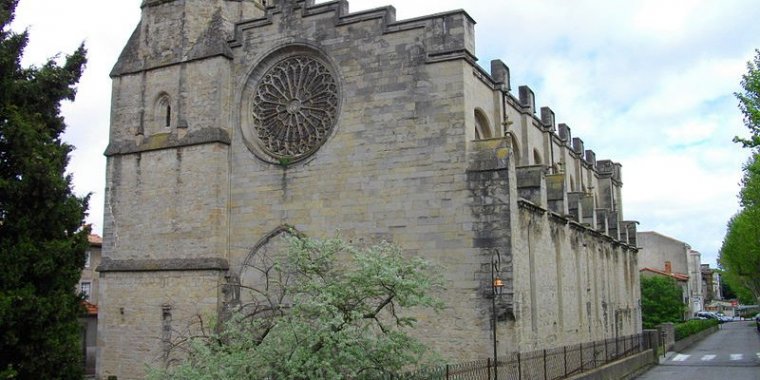
Cathédrale Saint-Michel de Carcassonne. ![]()
Tours
Much to see in this somewhat neglected region of France. Get into the hills and visit little villages like Minerve. Try using the Michelin maps but forsake the red roads and take to the little white roads. You will be rewarded by seeing lovely little places that tour buses etc. never visit.
Carcassonne can also be visited departing from Toulouse.
What to Do in Carcassonne
Medieval jousting displays are held twice a day between the two walls. Whilst this may sound like a typical tourist activity, this is actually a very impressive and entertaining display of horsemanship and combative competition. Entry is €10 for adults as of Summer 2008 - certainly one of best €10 that we spent on our Summer trip.
• Torture Museum (Châteaux Cathares et Instruments de Tortures), 17 Rue du Grand Puits, +33 468269522. If you're up to it, this museum is also worth a visit. It's small but filled with torture instruments from the Middle Ages.
There are regular barge trips along the historic Canal du Midi, and these are a very relaxing way of spending some time. The boats leave from the jetty just outside the main train station, and tickets can be bought from clearly signposted vendors at the canal-side (just beside the lock). Multilingual commentary is provided on the history of the canal and the various sights along the way.
• Festival de Carcassonne is held in July and August. Around half of July there is huge firework show (second biggest in France).
• Domaine de Pommayrac, Chemin de Pommayrac, Verzeille (Verzeille is 12.5 km south of Carcassonne. From the village, follow signs for Centre équestre), +33 04 68 69 49 60. horse trail riding and horseback lessons and courses, holiday accommodations, restaurant.
Eat
Don't leave Carcassonne without trying cassoulet, a local dish made of beans, sausage and duck. Foie gras is also a speciality of the region, so expect it to be on many menus.
There are bars around the train station (la gare) that offer cheap eats. There are a few restaurants on rue Trivalle, the road that connects the town centre with the Cité. Le Trivalou (69 rue Trivalle) has very friendly service and delicious home-made dishes, including cassoulet (€16). There are also quite a few restaurants clustered around the main square inside the Cité, the majority of which have outside tables so you can people-watch and enjoy the buzz of the square on summer evenings!
Budget permitting, there are several excellent restaurants inside the Cité, serving really good regional food. Among them are La Barbacane, Chez Saskia, Restaurant Comte Roger and the Brasserie le Donjon. These all serve divine food and the service is, as you would expect, impeccable.
As Carcassonne can get quite touristy during the summer season, restaurants can become crowded and the prices charged can be a bit over the top. You may therefore wish to eat away from the Cité, perhaps in the town centre instead, or better in one of the enchanting villages away from Carcassonne.
Drink
Regional wines.
• Eurl le Bar a Vins, 6 Rue du Plo, +33 4 68 47 38 38. Nice, sheltered, relatively quiet place to grab an ice cream or drink.
Sleep
It is advisable to book earlier if visiting Carcassonne during the high season.
Budget
• Hosteling International Carcassonne, Rue du Vicomte Trencavel, Cite Médiévale, +33 468252316. Hostel located in the medieval city, open April to October. Good place to go on a budget. They offer various activities to guests. There is an extra fee for those who are not Hosteling International members.
Mid-range
• Notre Dame de l'Abbaye. Offers moderately priced accommodation in a converted abbey building and is just outside the Cité. Free wifi and friendly English-speaking reception staff.
• Camping de la Cité, Route de St Hilaire. By the river, overlooked by the castle, signposted from the town centre; good facilities (tennis grounds and pool) with a path running into the city. Gets fairly crowded in summer. Open April - October.
• Carcassonne Porte de la Cite (Mercure Hotel), 18 rue Camille Saint-Saens, +33 468119282, e-mail: H1622@accor.com. Located about 5 minutes' walk from the Cité de Carcassonne. Offers decent accommodation. From €97 per night.
Splurge
• Hotel de la Cité, Cite Medievale, +33 468112300. Is the most historical, luxurious (and most expensive) hotel in Carcassonne. Operated by Orient Express Hotels.
Go next
• Limoux - Small town south of Carcassonne known for its sparkling wine and Le Carnaval de Limoux, which is a three month carnival held each winter. (Wikivoyage, Wikipedia)
See also Carcassonne in Pictures.
YOU MAY ALSO LIKE

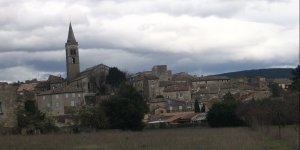




 If you own or manage a travel-related business such as a hotel, a bed-and-breakfast, a restaurant, a pub or a cafeteria, you can create a web page for your business for free on Titi Tudorancea Travel Info. » |
